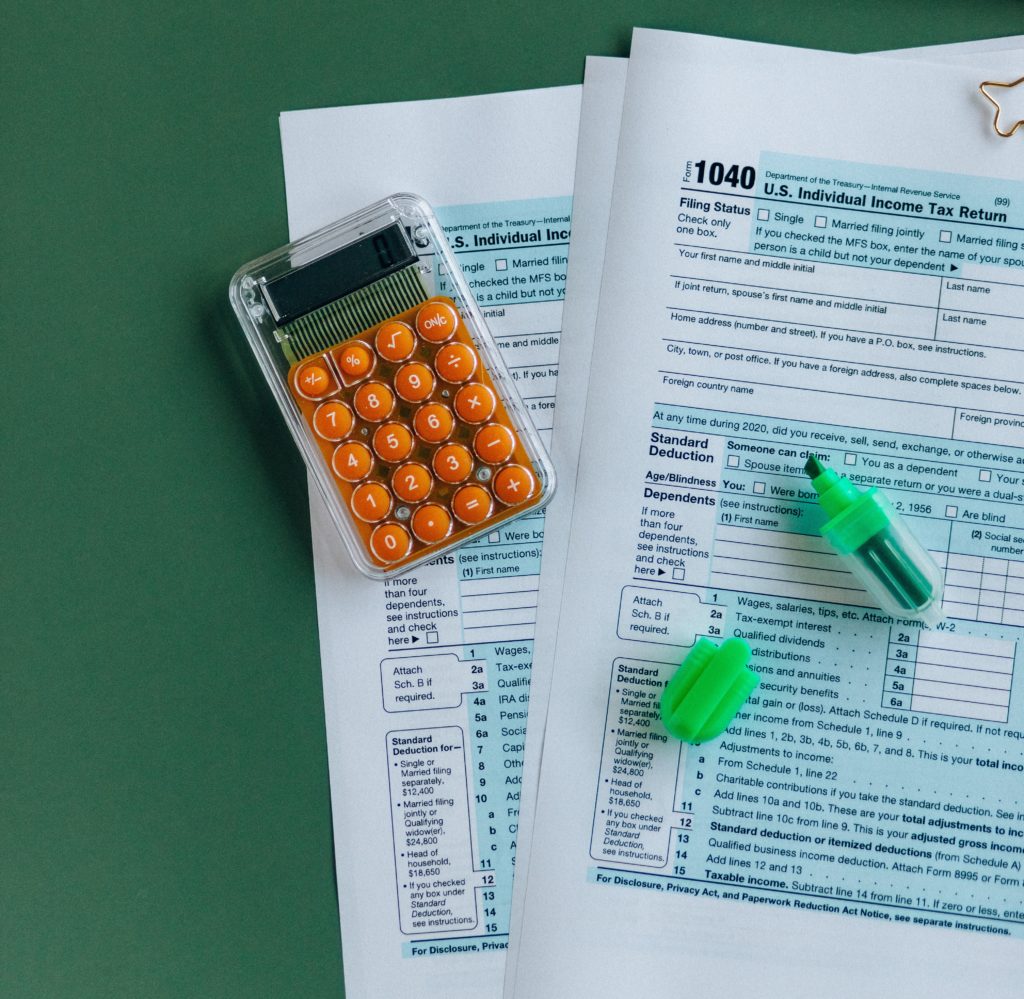2022 Year End Tax Planning Letter for Business Clients
As the year draws to a close, it’s important that we meet to discuss any year-end strategies that might help lower your business’s taxable income for 2022.
The most significant tax law changes during the year took place in August when the 2022 Inflation Reduction Act (2022 IRA) was signed into law. While the new law did not change tax rates for most businesses, it does extend some expiring business tax credits while also introducing some new tax credits that may benefit your business. It also provided a hefty increase in IRS funding to bolster taxpayer services and enforcement of the tax code.
The following are some strategies we should consider for reducing your business’s taxes for 2022.
Section 179 Expensing and Depreciation Deductions
The two business tax deductions that present the best opportunities for reducing your business’s taxable income are the Section 179 deduction, where your business can elect to deduct the entire cost of certain property acquired and placed in service during the year, and the bonus depreciation deduction, where 100 percent of the cost of business property may be expensed. Under the Section 179 expensing option, your business can immediately expense the cost of up to $1,080,000 of “Section 179” property placed in service in 2022. This amount is reduced dollar for dollar (but not below zero) by the amount by which the cost of the Section 179 property placed in service during 2022 exceeds $2,700,000.
The bonus depreciation rules apply to all businesses unless the business specifically elects out of these rules. An election out might be preferable where a business expects a tax loss for the year and the bonus depreciation would just increase that loss or where it might be advantageous to push depreciation deductions into future years. For example, if the owner of a pass-thru entity to whom these deductions would flow expects to be in a higher tax bracket in future years, such deductions might be of more use in those future years. When applying both the Section 179 deduction and the bonus depreciation deduction to an asset, the Section 179 deduction applies first.
If you need a vehicle for your business, purchasing a sport utility vehicle weighing more than 6,000 pounds, can trigger a bigger deduction than if a smaller vehicle is purchased. This is because vehicles that weigh 6,000 pounds or less are considered listed property and the related first-year deduction is limited to $19,200 for cars, trucks and vans acquired and placed in service in 2022. For vehicles weighing more than 6,000 pounds, however, up to $27,000 of the cost of the vehicle can be immediately expensed.
It’s worth noting that if you leased a passenger automobile in 2022 with a value of more than $56,000, the deduction available for that lease expense is reduced. In such cases, you must include in gross income an amount determined by a formula the IRS issues each year.
Qualified Business Income Deduction
If you are conducting your business as a sole proprietorship, a partner in a partnership, a member in an LLC taxed as a partnership, or as a shareholder in an S corporation, the qualified business income (QBI) deduction can significantly help reduce taxable income. The QBI deduction allows eligible taxpayers to deduct up to 20 percent of their QBI, plus 20 percent of qualified real estate investment trust dividends and qualified publicly traded partnership income. A W-2 wage limitation amount may apply to limit the amount of the deduction. The W-2 wage limitation amount must be calculated for taxpayers with a taxable income that exceeds a statutorily-defined amount (i.e., the threshold amount). For any tax year beginning in 2022, the threshold amount is $340,100 for married filing joint returns and $170,050 for all other returns.
Since the QBI deduction reduces taxable income, and is not used in computing adjusted gross income, it does not affect limitations based on adjusted gross income such as the medical expense deduction or the calculation of social security income that is includible in income. However, the QBI deduction does not apply to a “specified service trade or business,” which is defined as any trade or business involving the performance of services in the fields of health, law, accounting, actuarial science, performing arts, consulting, athletics, financial services, brokerage services, including investing and investment management, trading, or dealing in securities, partnership interests, or commodities, and any trade or business where the principal asset of such trade or business is the reputation or skill of one or more of its employees. Engineering and architecture services are specifically excluded from the definition of a specified service trade or business.
Rental Real Estate
If you have any rental real estate activities, it’s important to determine if the activity will be considered a passive activity by the IRS. Generally, losses from passive activities are only deductible against passive activity income. However, a deduction of up to $25,000 ($12,500 if married filing separately) may be allowed against nonpassive income to the extent you actively participates in the rental real estate activities. This deduction is subject to a phaseout for individuals with modified adjusted gross income above $100,000 (or $50,000 if married filing separately). Additionally, you may be eligible for a qualified business income deduction if certain criteria are met, such as the rental activity qualifying as a Section 162 trade or business.
Substantiation of Vehicle-Related Deductions
In audits, the IRS tends to focus on deductions taken for vehicle expenses. If not properly substantiated, such deductions are disallowed. Thus, if vehicles are used in any part of your business or business-related activities, your tax records with respect to each vehicle should include the following:
(1) the amount of each separate expense with respect to the vehicle (e.g., the cost of purchase or lease, the cost of repairs and maintenance, etc.);
(2) the amount of mileage for each business or investment use and the total miles for the tax period;
(3) the date of the expenditure; and
(4) the business purpose for the expenditure.
The IRS will consider the following as adequate substantiation for such expenses: (1) records such as a notebook, diary, log, statement of expense, or trip sheets; and (2) documentary evidence such as receipts, canceled checks, bills, or similar evidence.
Its important to note that records are considered adequate to substantiate the element of a vehicle expense only if they are prepared or maintained in such a manner that each recording of an element of the expense is made at or near the time the expense is incurred.
Employee Benefits
One area I would like to discuss with you are the tax and other advantages your business could reap by offering a retirement plan and/or other fringe benefits to employees. By offering such benefits, your business has a better chance of attracting and retaining talented workers which, in turn, reduces the costs of searching for and training new employees. Contributions made to retirement plans on behalf of employees are deductible and your business may be eligible for a tax credit for setting up a qualified plan if you don’t already have one.
If you haven’t already done so, you might consider the establishment of a flexible spending arrangement (FSA). An FSA allows employees to be reimbursed for medical expenses and is usually funded through voluntary salary reduction agreements with the employer. The employer has the option of making or not making contributions to the FSA. Some of the benefits of providing an FSA for employees include contributions made by the business being excluded from the employee’s gross income, reimbursements to the employee are tax free if used for qualified medical expenses, the FSA can be used to pay qualified medical expenses even if the employer or employee haven’t yet placed the funds in the account, and up to $570 of funds in the FSA can be carried over to subsequent years indefinitely.
Another popular employee benefit your business might consider is a high deductible health plan paired with a health savings account (HSA). The benefits to your business include savings on health insurance premiums that would otherwise be paid to traditional health insurance companies and having employee wage contributions to the plan not being counted as wages and thus neither the employer nor the employee is subject to FICA taxes on the payroll contributions. As for employees, they can reap a tax deduction for funds contributed to the HSA, and there is no use-it-or-lose-it limit like there is for most flexible spending arrangements (FSAs). Thus, the funds can grow tax free and be used in retirement.
Pass-Thru Entity Considerations
If you are operating a business through a pass-thru entity such as a partnership or S corporation, your basis in the entity must be high enough to allow for any loss deduction, if you have one for the year. In such a situation, we should consider the options available for increasing your basis in such entity.
If you are an S corporation shareholder it’s important to ensure that you and other shareholders involved in running the business are paid an amount that is commensurate with the work being done. The IRS scrutinizes S corporations which distribute profits instead of paying compensation subject to employment taxes. Failing to pay arm’s length salaries can lead to tax deficiencies, interest, and penalties. The key to establishing reasonable compensation is showing that the compensation paid for the type of work an owner-employee does for the S corporation is similar to what other entities would pay for similar work. An S corporation needs to adequately document the factors that support the salary an S corporation owner is being paid.
Also, because there are stringent requirements for who may be an S corporation shareholder, if the number of shareholders have changed or increased during the year, we should review the residency or citizenship status of the S corporation’s shareholders and S corporation stock beneficiaries (including contingent and residuary beneficiaries).
Energy Efficient Commercial Building Deduction
If your business owns a commercial building, a deduction is available for an amount equal to the cost of energy efficient commercial building property placed in service during the tax year. The maximum deduction with respect to any building for any tax year is the excess (if any) of (1) the product of $1.88, and the square footage of the building, over (2) the aggregate amount of the deductions for all prior tax years.
New and Modified Tax Credits
The 2022 IRA modified tax credits for electric vehicles (EVs) and fuel cell vehicles. The law also enacted new tax credits for used and commercial clean vehicles. Multiple factors determine whether an EV purchased in 2022 qualifies for federal tax credits. Many EVs purchased before August 16, 2022, qualify for a tax credit of up to $7,500 (with smaller amounts available for certain makes and models). Vehicles manufactured by Tesla or General Motors purchased in 2022 are not eligible for tax credits, as Tesla and GM have exceeded the 200,000 vehicle threshold that limits the number of tax credits that can be claimed for vehicles made by a manufacturer.
For vehicles purchased after August 16, 2022, only vehicles for which final assembly occurred in North America qualify. The U.S. Department of Energy has released a list of model year 2022 and 2023 vehicles with final assembly in North America.
EV purchasers who ordered a vehicle before August 16, 2022, and take delivery of their vehicle at a later date may be able to claim tax credits for vehicles not assembled in North America if they had a written binding contract to purchase the vehicle. Most of the changes to the clean vehicle tax credit are effective starting in 2023, with the exception of the final assembly in North America requirement, mentioned above. Beginning in 2023, EVs qualify only if the vehicle’s battery meets certain conditions. The maximum potential credit is the sum of two amounts: the critical mineral amount and the battery component amount.
The 2022 IRA also introduced a new credit for qualified commercial electric vehicles placed into service by the taxpayer after 2022. The amount of credit is 30 percent of the cost of the vehicle, up to $7,500 in the case of a vehicle that weighs less than 14,000 pounds, and up to $40,000 for all other vehicles.
The energy investment tax credit (ITC) was also extended by the 2022 IRA and could reduce your business’s federal tax liability by a percentage of the cost of a solar system installed during the tax year. Solar systems placed in service in 2022 or later, and that began construction before 2033, are eligible for a 30 percent ITC or a production tax credit based on a kilowatt-hour formula if they meet certain labor requirements or are under 1 megawatt in size.
Research and Development Deductions and Credits
Finally, the provision allowing a deduction for research and development (R&D) expenses expired at the end of 2021. Such expenditures must now be amortized over five years. However, under the 2022 IRA, businesses that engage in certain types of research may qualify for an income tax credit based on its qualified research expenses. The credit is calculated as the amount of qualified research expenditures above a base amount that is meant to represent the amount of research expenditures in the absence of the credit. Because some small businesses may not have a large enough income tax liability to take advantage of their research credit, the law allows that small business (i.e., a business with less than $5 million in gross receipts and that is under five years old) to apply up to $250,000 of the research credit toward its social security payroll tax liability. The 2022 IRA expanded the amount available for the credit from $250,000 to $500,000 for tax years beginning after 2022.
It’s worth noting that there is a slim chance that the R&D expensing provision that terminated at the end of 2021 may be restored. There have been ongoing discussions between Republicans and Democrats about a potential last minute end-of-year tax deal regarding a reinstatement of the R&D credit, which expired at the end of 2021 and which businesses are anxious to see reinstated, in exchange for an enhanced child tax credit that is similar to the 2021 enhanced child tax credit enacted as part of the American Rescue Plan Act of 2021. Because it is unclear what, if any, tax legislation may be passed before the end of the year, our year-end planning will have to be based on existing law.
As you can see, there is much to consider before we prepare your 2022 business tax return and calculate any estimated tax payments that might be due in 2023. Please call Gregory J. Spadea at 610-521-0604 so we can set a time to review potential strategies for reducing your business’s 2022 taxable income and tax liability.











